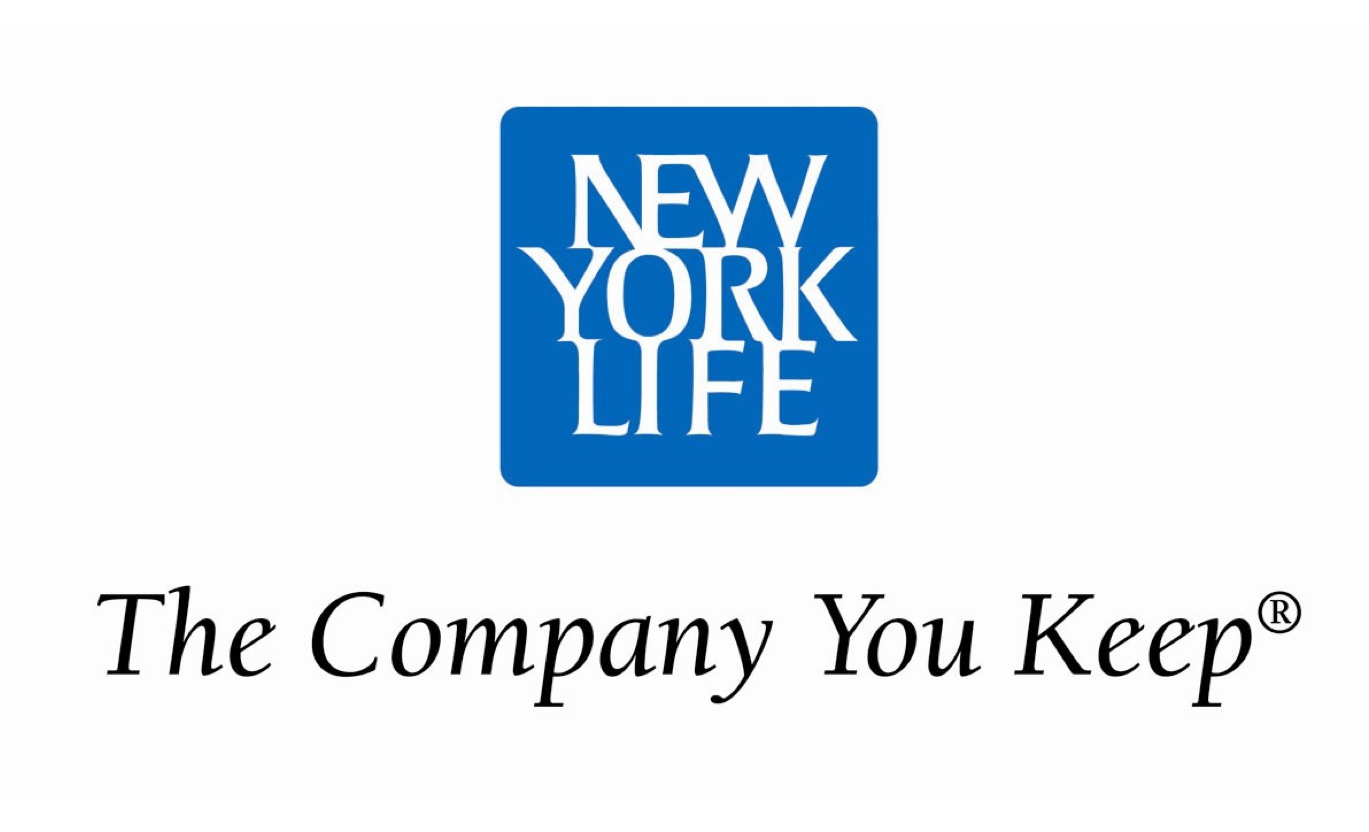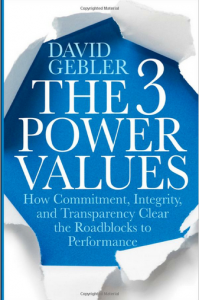Seymour “Sy” Sternberg served as Chairman and CEO of New York Life from the late 1990s until 2008. New York Life is a Fortune 100-sized company in existence since 1845. It is the largest mutual life-insurance company in the US, and one of the largest life-insurers in the world.
I spoke with Sy in his offices atop the New York Life building on lower Madison Avenue in Manhattan.

 CHG: Thank you very much for taking time with us to talk about trust, an issue that I understand has some resonance for you. Let’s start with the company. New York Life goes back over 150 years. Are there some principles or values that have stayed with the company since its beginning?
CHG: Thank you very much for taking time with us to talk about trust, an issue that I understand has some resonance for you. Let’s start with the company. New York Life goes back over 150 years. Are there some principles or values that have stayed with the company since its beginning?
SS: When I took over, we decided on a very simple set of values for the company; not that the values were new, in fact they represented values we had always had—I just wanted a shorthand for it. Those values were financial strength, integrity, and humanity. Implicit in the integrity component, the way I see it, is trust.
Rich Sternhell recently showed me an interview from about 40 years ago with our then-CEO: let me quote a bit of it:
“These days we’re being constantly reminded of how important are honesty, integrity and dependability. We were founded in 1845 on a remarkably similar premise: Trust us, we said then as we say now, and we will keep our promises…The guarantees we make last a lifetime.”
One of our more recent ads shows an old desk with an old quill pen on it; the text says, “Our promises have no expiration date.” My point is simply, these are themes that have been around for a long time. [Note: the three values are engraved on a plaque inset into the wall on the ground floor of the NY Life headquarters building—across the hall from the company museum].
We’re trying to emphasize this in other ways too. The industry has for a long time sold immediate annuities. We’ve renamed that product to emphasize our values: Guaranteed Lifetime Income. Same product, but it emphasizes we are insuring not mortality risk, but longevity risk.
It also uses the word “guarantee,” which again reinforces the promises we’re keeping. We’re not emphasizing your risk of dying; we’re insuring your “risk” of living, making sure you’ve got enough money. That’s the current market need; but it’s also a simple rephrasing of our basic values that have always driven us.
The word ‘guarantee’ is important in that rephrasing too; just like our guarantees have always been there for life insurance. We paid every claim in the ’29 crash. We paid claims under a flag of truce in the Civil War. During the San Francisco earthquake, we were the first to provide loans to survivors. During 9/11, when I chaired the American Council of Life Insurance, we waived all of our war provisions in our policies, and did not enforce clauses on proof of death. We led that drive. That is all values-driven. Do what is right. And that’s where trust comes in.
CHG: How did you, Sy Sternberg, happen to join New York Life? What brought you into the fold?
SS: I got an electrical engineering degree from City College of New York, then went to work for Raytheon in Massachusetts, and got a masters in Electrical Engineering at Northeastern. At that time, electrical engineering was the one place where you could pursue computer science. I switched from hardware to software, and helped design Raytheon’s first automated drafting systems. We did a purchasing system, and then I was hired away by a consulting firm that had a contract with MassMutual, in Springfield, to automate the entire agency network. It was a great job, so I joined up, and in 1975, MassMutual hired me directly.
I rose up the ranks in information systems, and the president then asked me to take over the health insurance business. (I didn’t realize at the time that they figured that business was dying and there was nothing to lose in handing it to me; fortunately, I was able to turn it around). I left MassMutual for New York Life in 1989, then rose up the ranks and became Vice Chairman in 1995, and president in 1996, and—on April Fools’ Day 1997—CEO.
CHG: What role does the concept of trust play in the life insurance industry? Is that role distinct from the role trust plays in business in general?
SS: I think people expect trust in all businesses. The need is always there. But I think it’s distinct in life insurance, for several specific reasons.
One reason is complexity. Few people really understand insurance, they cloud over when you get into it. It means you end up having to trust the person who sells it to you.
Another reason is that it’s a high stakes product: there are big consequences. If we don’t get it right, and it doesn’t pan out, that not only hurts you the customer, but the family involved as well. Consequences extend beyond the customer to his or her most important relations.
The third area of trust is that this is a business where it’s fairly hard to switch providers or vendors. You can’t just redo your insurance policy like you can switch restaurants or bank accounts—because the rates have gone up as you’ve gotten older. You may not even be insurable any more. So the consequence of changing vendors is much more severe in this business.
So there are three big reasons why trust is even more important in insurance than in others. And one more: we say in our ads, what we sell is promises; that’s it. If people can’t trust your promises, you’ve got a serious business problem.
CHG. Let’s go back up to big picture for a minute: what does the notion of ‘trust’ mean to you in the world of business?
SS: To me, trust means operating honestly. There is no agreement that can substitute for honesty in this world. There are bad people–those are people without a conscience.
Most of us, we do what’s right because it’s right, because you wouldn’t be able to sleep otherwise. So how could Madoff do what he did? Because he has no conscience, that’s how. I’m not saying you shouldn’t have formal agreements, but the relevant question is: if you didn’t have a formal agreement with someone, would the same thing happen? And if the answer is yes, than that’s someone you can trust.
Most people live by those principles, or at least try to; they may have less of a fine ear about it, but they’re not without a conscience.
CHG: So what’s happened to that ‘fine ear’ out there, how have we gotten less attuned to doing what’s right?
.jpg) SS: The world lives cyclically, not linearly. We move from overly done self-interest to the opposite. Under certain environmental conditions, one’s behavior becomes more self-interested.
SS: The world lives cyclically, not linearly. We move from overly done self-interest to the opposite. Under certain environmental conditions, one’s behavior becomes more self-interested.
The insurance industry in the 50s and 60s was a Father Knows Best business—the Robert Young character was a life insurance agent. It was not dog eat dog, it was civil. At that time, no life insurance company had a CMO or a CFO—because, honestly, you couldn’t easily lose money. You invested at 5%, and provided an IRR of 2%, so who needs a CFO? And you only changed your products every 5-10 years, so who needed a Chief Marketing Officer?
Until about 1980, that is, when Jane Bryant Quinn wrote, “Do you know what the internal rate of return on your life insurance is?” Suddenly you had to get a CFO, because suddenly the products and markets all became a lot more complex. Product series started changing twice a year. It became a more competitive market, and some agents took shortcuts.
In mid to late 80s, the whole industry got caught up in promising dividends. Now, we all had small print saying dividends weren’t guaranteed, but agents would say you know, they’ve always grown. Well, interest rates had gone up for 30 years, that was the truth—it was a huge secular rise in interest rates. But then the 80s came, and suddenly—and for the last 20 years—they’ve gone down.
But because of what the agents said vs. what really happened, we now have compliance departments. At New York Life, we have over 100 people now in our compliance department, making sure that nothing gets said that’s wrong. At first, the agents hated that stuff. The morale of the agent was very low in the 90s. We had to learn to operate as a much more rigid business required by regulations.
So—was that a time of low integrity? I don’t really see it that way: I see it as more circumstantial. 30 years of rising rates, that’s long enough you begin to forget things could be otherwise.
CHG: However: people who get wrapped up in compliance, they end up doing things not because they’re right—because of their conscience—but because of compliance. Aren’t compliance rules in some sense the cause of a decline in conscience?
SS: There’s definitely some truth to that. It goes to the role of principles. Let me give you an analogy. How do you determine what’s a liability on your balance sheet? There’s a whole set of accounting literature to answer that. Well I’ve got a simple definition: you put it on the balance sheet when it is, or could be, a liability of the enterprise. That’s a principle.
PricewaterhouseCoopers came out some years ago in favor of principles-based accounting, rather than rules-based accounting. This relates to compliance—when you work from principles-based accounting, not rules-based accounting, you don’t focus on ways to get around the rules—you focus on the principles.
So—you focus on principles, because of exactly what you said: focusing on rules compliance doesn’t exercise the conscience.
CHG: Well that leads us nicely into talking about what happened in the recent financial crisis.
SS: There are four things that happened. Let me start with the non-unique aspect, which is that this was a natural cyclical situation. This is the credit market. After a bad cycle in the credit markets, you put in strong covenants and you raise the spread, all in reaction to the bad cycle. But then high spreads attract competition, then people start squeezing margins, and covenants get weaker and weaker, and finally it blows up again. So part of what happened is—just another business cycle.
But here are the other three drivers, special ones. Number one was the repeal of Glass Steagall, and that was a serious mistake. Glass Steagall was put into place for a really good reason. It was created because the mindset and objectives of a customer doing business with a bank are different from the mindset and expectations of a customer doing business with an investment firm. Once a bank starts thinking like an investment firm, the risk profile of the bank goes up.
CHG: Help me out here. How is it that the investment banks don’t appear to agree with that? Aren’t they running partly a banking-client business, and partly a casino? How is that?
SS: Well, people see things the way they come to see them. If you’re an investment bank these days, they don’t see a contradiction like you might. Sandy Weill started it with CitiCorp, combining insurance and brokerage and banking, and he founded it partly on the model of European banks. Not crazy, just different.
Of course, then it all ran up to 30:1 leverage ratios, and it all would’ve gone down in flames had it not received TARP funding. Back in the Glass Steagall time, it would have been one thing for Goldman to have taken risks, and quite another for Citibank to have done so. But post Glass Steagall, those distinctions were lost to us.
CHG: OK, back to reasons for the meltdown. Besides cyclical credit and the repeal of Glass Steagall, what else?
SS: Well, here’s what I said to Barney Frank. You’ve got a broker, with no skin in the game; his whole motivation is to sell. Then you have the originating bank, that used to take that loan and keep it on its books, and that bank was always concerned it was underwritten correctly. Since then we moved to a place where those banks were laying off all the loans. The people making loans these days have no skin in the game. The originating banks shouldn’t be allowed to lay off 100% of the mortgage loans they make.
In our business, you can’t do that—you’re not allowed to. In New York State, you can’t legally re-insure any more than 90%, which means the one who sells the product still has skin in the game. The underwriter needs to sustain a piece of the responsibility; that’ll keep him honest. In the packaged mortgage loan business, we lost that. The lenders did not have skin in the game. ‘Put that in the legislation,’ I said. (And it did, in fact, end up in the legislation).
CHG: And the last reason?
SS: The b-schools and the investment banks pride themselves on the creation of what they called innovation; exotic securities, securities of securities. A mortgage-backed security maintains in it the discrete mortgages that went into the basket. So you could do a credit rating on it.
But once you turn it into a collateralized debt obligation, a CDO, you lose that direct connection with constituent parts. So here’s Moody’s and S&P. Now, people claim they were rating CDOs in bad faith, from self-interest. I don’t think so; I think they rated them wrongly because they didn’t know what they were doing. Ignorance, not venality, was the explanation. Nobody knew how to test these models, including the ratings agencies.
And on top of it all, it was all interconnected—the world of investment banks and credit instruments and global markets had all become inextricably tied together.
CHG: Now, let me push you on that. Sam Hayes, investment banking professor at HBS, is quoted in the movie Inside Job saying (about Wall Street in general,) “Oh, I think they understood what was going on, all right.” So—how do I square his idea with yours that it was just an honest issue of complexity and low understanding?
After all: you guys at NY Life managed to cut your risks a full year ahead of the crash. You saw it coming—why didn’t they?
SS: Let me explain that. Our Chief Investment Officer came to me a year and a half before the blowup and said, “I don’t like what I’m seeing here.” The covenants were coming off, the spreads were compressing, the indicators were clear. He said, “I want to start taking X% of our cash flow every month and putting it in treasuries.” Which meant taking a hit. We didn’t know when it would all fall down, we just knew that eventually it would. Reversion to the mean is among the most dependable principles. So when it did, we were very well positioned.
But that doesn’t mean we knew that a particular CDO would blow up, or that it was a single-A versus AAA. Our business was the general environment, the credit cycle issue I mentioned—we did not have to deal with the complexity issue I mentioned. We could afford to focus on the secular credit cycle.
CHG: Let’s touch on the mutual form of insurance in the insurance business.
SS: Good, because it’s related to this discussion. A mutual insurance company is not owned by its shareholders, it’s owned by its customers, like a co-op. And I believe the natural state of an insurance company is a mutual, not a stock company, and here’s why. And why it brings this discussion full circle.
Back in 1997, a lot of companies were de-mutualizing. One of the arguments was if you become public, you could raise capital and acquire companies. People felt the finance businesses were consolidating (again, think CitiCorp), and the argument went you had to raise capital to acquire, or be acquired.
But we felt is there’s a fundamental conflict between stockholders and customers in an insurance business. In a widget company, a creditor wants to see the maximum amount of equity in the firm, so that there’s a cushion to the debt-holders. The equity holder, on the other hand, wants to have the minimum equity, to maximize their return on equity.
If you’re a widget customer, you don’t have a horse in that race. You really don’t care about the debt/equity balance.
But in the insurance business, if you are a customer with an insurance policy, you are a creditor in that company. Our customers loan us money—called premiums—and in the end, we pay it back—in death benefits. It’s a creditor relationship, pure and simple. Our customers, in other words, are exactly aligned with our creditors. The more capital we have, the more safety there is to pay claims. That’s how we get rated AAA—our ability to pay policies.
Other companies that went stock started buying back stock, because their shareholders wanted higher returns. So in 2008, to take one example, a headline came out from Lincoln National; their earnings were down. And in the same press release, they approved a stock buyback program. When every warning signal is pointing to the fact that they should be husbanding their capital, they were about to use that scarce capital to buy back stock to placate their shareholders. That’s a conflict of interest in our minds.
And a year later—a billion and a half in TARP money went to Lincoln National. To pay back a bunch of the money that frankly had gone to their stockholders a short while earlier. Obviously that didn’t have to happen with us.
So what’s trust got to do with that? Everything. We are in the business of making promises and keeping them. We have to live by long-term principles of financial strength and integrity—and the mutual form is at the heart of that.
A mutual company has a singular focus—what’s best for our creditors/customers. We have no conflict. That’s why I argue that the natural form for a life insurance company is not a stock company, but a mutual company. That’s all about principles, and all about trust.
CHG: Sy, this has been fascinating. Thank you so much for taking the time to speak with us.
——————————
Seymour “Sy” Sternberg on Trust in the Life Insurance Business is number 16 in the Trust Quotes: Interviews with Experts in Trust series.
Recent interviews include:
Ava J. Abramowitz on Essentials of Negotiation (Trust Quotes #15)
Robert J. Kueppers on Trust and Regulation (Trust Quotes #14)
Rich Sternhell on the Evolution of Trust in Business (Trust Quotes #13)
Read the complete Trust Quotes series.
 This is the tenth in a series called Books We Trust.
This is the tenth in a series called Books We Trust.
 Ron Prater
Ron Prater Put Values First
Put Values First This post comes from our upcoming book,
This post comes from our upcoming book,  If you own a house and I’m your neighbor, I’ll respect your property rights. It’s just the right thing to do. (Though if there’s a fire at my place, I might break in to borrow your fire extinguisher).
If you own a house and I’m your neighbor, I’ll respect your property rights. It’s just the right thing to do. (Though if there’s a fire at my place, I might break in to borrow your fire extinguisher).
 CHG: Thank you very much for taking time with us to talk about trust, an issue that I understand has some resonance for you. Let’s start with the company. New York Life goes back over 150 years. Are there some principles or values that have stayed with the company since its beginning?
CHG: Thank you very much for taking time with us to talk about trust, an issue that I understand has some resonance for you. Let’s start with the company. New York Life goes back over 150 years. Are there some principles or values that have stayed with the company since its beginning?.jpg) SS: The world lives cyclically, not linearly. We move from overly done self-interest to the opposite. Under certain environmental conditions, one’s behavior becomes more self-interested.
SS: The world lives cyclically, not linearly. We move from overly done self-interest to the opposite. Under certain environmental conditions, one’s behavior becomes more self-interested. Warning: Rant ahead.
Warning: Rant ahead. A few years ago, I watched
A few years ago, I watched